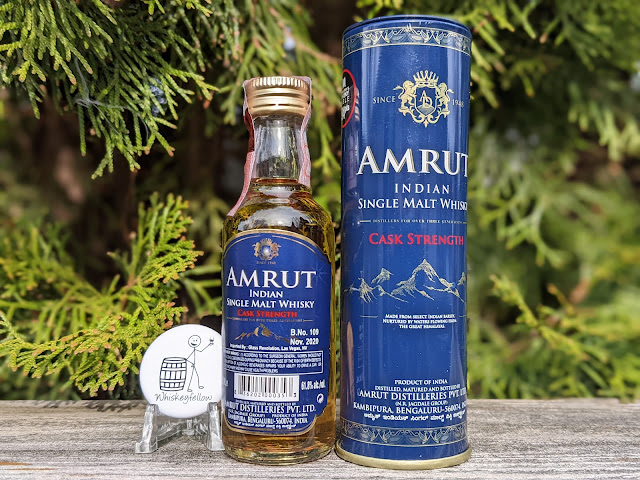India
is the single-largest producer of sugar cane in the world. Sugar cane is used,
among other things, to produce molasses. And, in India, many things called “whisky”
meant for the domestic market are nothing more than fermented molasses, similar
to what we’d recognize as rum.
However,
for export purposes, Indian whisky is the nice, tight definition that the rest
of the world uses. It is distilled from grain and shares many qualities with Scotch,
Irish, and other whiskies.
What
differentiates Indian Single Malts from their cousins is the typical barley
used is six-row compared to the more common two-row. Six-row barley is
typically used in animal feed. It possesses more protein and less starch than
its two-row counterpart. It also has a higher enzyme content to convert
starches to sugars during fermentation. On the other hand, two-row barley is
easier to grow, especially in drought-prone conditions, and you get a greater
yield of distiller’s beer than you would six-row. Finally, two-row barley
usually provides more mellow flavors.
In
2004, the world was introduced to Indian Single Malts thanks to Amrut. From
there, Jim Murray is considered responsible for its acceptance, thanks to his
naming Amrut Fusion the third-best whisky in the world. The distillery
is located in Bengaluru.
Amrut Indian Single Malt is distilled from northern Indian six-row malted
barley. Its fermentation cycle is a longer-than-average 145-165 hours, and the
newmake is aged in 90% vintage Bourbon barrels and 10% new American oak, both
at a #3 char level. There is no age statement; it did rest for four to five
years with an average 12% annual angel’s share loss. It is non-chill filtered
and naturally colored.
A
handful of laws govern the export of Indian whisky; one such example is the
maximum allowable proof. Simply put, you cannot bottle a whisky higher than its
entry proof. As such, anything labeled “cask strength” has been proofed down as
needed, so it isn’t an actual cask strength whisky as most of us understand the
term, but it fits Indian regulations.
In
the case of Amrut Cask Strength, the whisky I’m reviewing today, that
made the bottling at 61.8% ABV (123.6°). It isn’t overly challenging to procure
a 750ml package; you’ll pay in the neighborhood of $85.00.
I
want to thank Glass Revolution Imports, the exclusive US distributor of
Amrut, for providing me with a sample of this Indian Single Malt in exchange for
a no-strings-attached, honest review. Now, let’s #DrinkCurious and learn
what this is all about!
Appearance: Served
neat in my Glencairn glass, this single malt looked the color of dull gold. The
liquid formed a thinner rim which released slow, thick tears.
Nose: A
sweeter aroma of banana, custard, starfruit, nuts, and pine (not juniper)
wafted from the glass. Forcing the air into my mouth offered a taste of roasted
almonds.
Palate: An
oily, full-bodied texture coated my tongue, and the first flavors I picked were
pineapple, lemon citrus, and coconut. As the whisky moved to the middle of my
palate, I discovered almonds, oatmeal, and cocoa powder. The back featured dark
chocolate, a puff of smoke, and oak.
Finish: The
long, spicy finish sizzled my hard palate but was not overwhelming. Instead,
earthy peat, chocolate, and oak notes were simple to identify.
Bottle, Bar, or Bust: What
some proof points do to a whisky is impressive. I was not too fond of the Amrut
Indian Single Malt at 46%. But, serve it at its cask strength, and it isn’t
even in the same universe. No water was needed; it would ruin the experience.
For the money, Amrut Cask Strength Indian Single Malt is a winner and earns my Bottle rating. Cheers!
My Simple, Easy-to-Understand
Rating System
- Bottle = Buy It
- Bar = Try It
- Bust = Leave It
Whiskeyfellow encourages
you to enjoy your whiskey as you see fit but begs you do so responsibly.

Comments
Post a Comment
As we should drink in moderation, all comments are subject to it. Cheers!